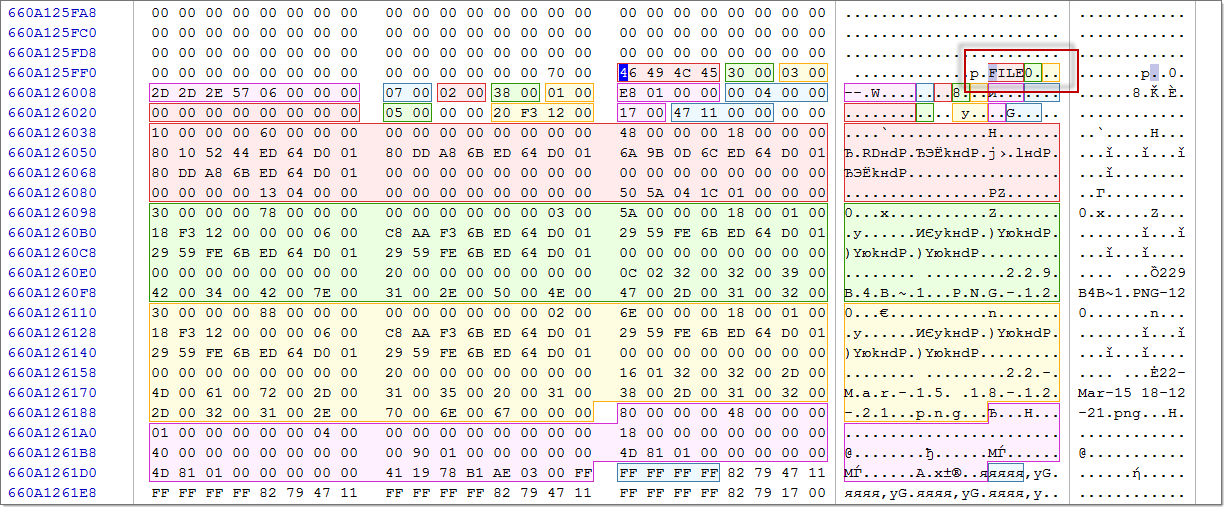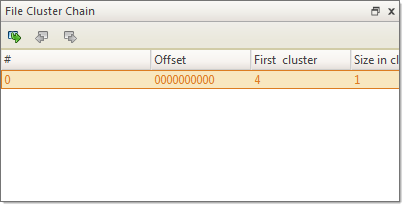Edit files and file records
Open file in Disk Editor
- Disk Explorer in My Computer view mode or
- use File Browser to navigate through drive contents
Select file and click Open in Disk Editor button to edit file's contents or use Inspect File Record command to edit file's record. You may use context menu for same result.
To open file in Disk Editor select it Scan Result view or Search Result view and click Open in Disk Editor button to edit file's contents or use Inspect File Record command to edit file's record. You may use context menu for same result.
You can use the Ctrl+H shortcut to open any selected item in Disk Editor.
Editing file
Disk Editor allows to edit file in several view modes:
- Disk mode
- File presented as raw data in context of physical data storage (disk)
- Partition Mode
- File presented as data on parent logical structure - partition or volume (logical drive )
- File mode
- Single file - seamless ray file contents.
File editing is the same as with any other editable object in Disk Editor. Read Working with editor for more information.
For safety reason, by default all objects are opened in Disk Editor as Read Only to prevent accidental modifications. In Edit mode, you can change content of the opened file or disk and all modifications are stored in memory. Changes are written to the drive when you click Save.
As with any advanced tool, use extreme caution with the Disk Editor. Changes that you make may affect disk structure integrity. You must be certain that the changes you make are in line with correct data structures before you save changes.
Inspect file record
Information about file in File Table could be viewed for file by doing one of the following:
- Select file in browser and click Inspect File Record button in toolbar or use the same command from context menu;
- While editing file in Disk Editor click Inspect File Record button in view's toolbar
- While editing volume (logical drive) click Browse File Records in view's toolbar to open File Records navigation pane.

Use data templates to inspect file record. Depending on file system, they can be named as file record templates, directory entries or superblocks.
File Cluster Chain view
- from the Editor's toolbar, choose
- form main menu choose

- Go to
- Go to selected cluster of cluster chain. Same effect can by achieved by double-clicking on cluster entry in cluster chain list.
- Go to Previous
- Go to previous cluster chain in sequence
- Go to Next
- Go to next cluster chain in sequence.